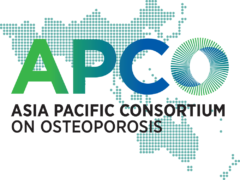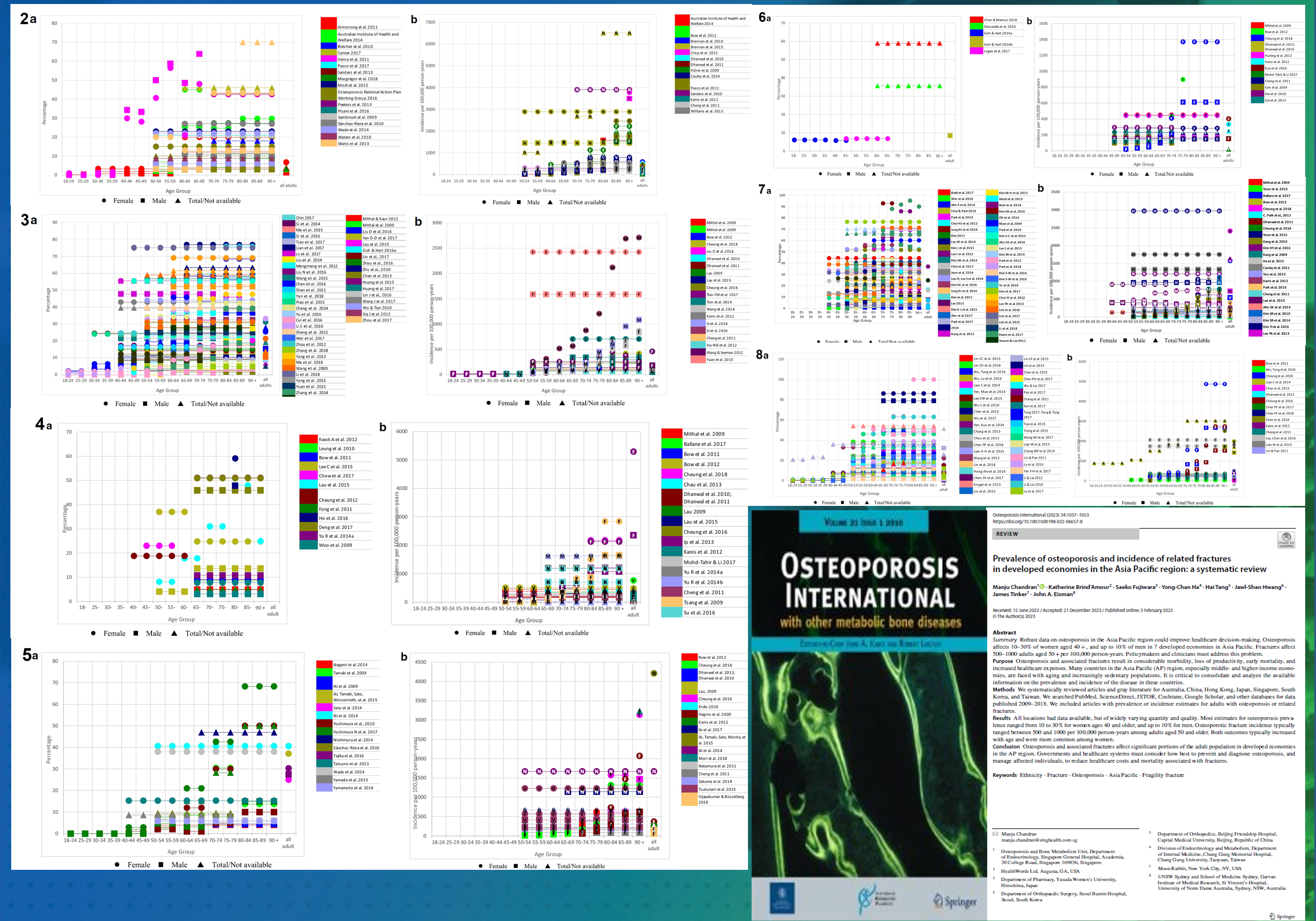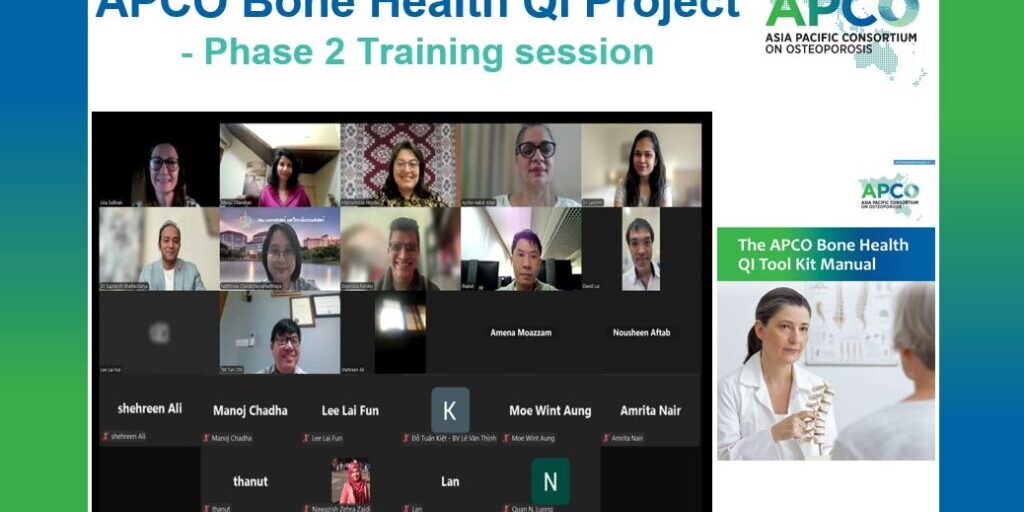Osteoporosis Experts from several countries in the Asia Pacific (AP) region collaborated recently to conduct a systematic review that consolidated and analysed data on osteoporosis and fracture rates in 7 upper-middle- and high-income economies within the region. The review which was published in the June 2023 issue of the prestigious journal, Osteoporosis International– a joint initiative between the International Osteoporosis Foundation and the National Osteoporosis Foundation of the USA, put the spotlight on the prevalence of osteoporosis and its associated fractures in Australia, China, Hong Kong, Japan, Singapore, South Korea, and Taiwan during the period 2000-2018. These developed economies were chosen for the review because they had the most complete data. The article also provided insights into the data published after this period. The study is unique because it is the first one that has estimated overall prevalence of both osteoporosis as well as the incidence of multiple types of osteoporotic fractures compared to previous studies in the region that have explored only the incidence of osteoporotic hip fractures.


The article had as its lead authors, APCO Chairperson, Prof Manju Chandran and APCO Executive Committee member- Prof John Eisman. Prof Jawl-Shan Hwang– an APCO Scientific Advisory Member was also one of the co-authors. The study was a comprehensive analysis of published literature. A total of 316 articles underwent data extraction and review. In addition to established and conventional data sources such as PubMed, ScienceDirect, the Cochrane Database of Systematic Reviews, JSTOR, and Google Scholar, to capture data that may have been published outside of formal academic realms, gray literature via country-specific Google search pages and special-interest websites from a preselected list of regional health organizations, journals, and advocacy groups were also scrutinized and included in the analysis.

The review highlights the prevalence of osteoporosis among both men and women from most of the developed economies in the Asia Pacific region. Estimates for osteoporosis prevalence ranged from 10 to 30% for women ages 40 and older, and up to 10% for men. This study reflected a higher osteoporosis prevalence in many populations aged 50 + (20–40% and sometimes much higher), especially among women. High end estimates of osteoporosis exceeded 50% in elderly female populations in many locations. Osteoporotic hip fracture incidence typically ranged between 500 and 1000 per 100,000 person-years among adults aged 50 and older, although estimates two or three times that rate became more common with increased age. Vertebral fracture incidence was most often reported between 200 and 600 cases per 100,000 person-years. Estimates of non-specified or general fragility fractures, or data reporting multiple types of fractures as a combined incidence, suggest that these locations have an overall fracture incidence of up to 2000 per 100,000 person-years, with some much higher and many (likely not all-inclusive fracture estimates) slightly below 1000 per 100,000. Studies published after the period of this review offer further data supporting the substantial prevalence of osteoporosis and related fractures in these locations.

The authors call out the limitations in the studies that have been conducted in the region as well as highlight the reasons why comparisons of prevalence of the disease between countries and regions is difficult. The authors also discuss the potential significant implication of their findings on healthcare resource allocation, prevention strategies, and public health initiatives. Since many individuals with poor bone health are still of working-age and actively contributing to these countries’ economies, lost productivity and increased healthcare expenditures caused by preventable disease, fractures, and even deaths are poised to exert a heavy burden on economies and societies.

How best to implement policies and processes for preventing osteoporosis, identifying it and its risk factors in adult men and women, and managing affected populations, to reduce the risk of initial and subsequent fractures has always been a challenge. The findings of this review serve as a valuable resource for healthcare professionals, policymakers, and researchers involved in addressing the burden of osteoporosis in the AP region as well as serve to potentially inform additional research on osteoporosis and its impact in the region. The variations in osteoporosis rates and fracture incidence across the seven countries also underscore the importance of considering country-specific factors when formulating healthcare policies and preventive measures.

The authors highlight the important service that organizations such as APCO and the International Osteoporosis Foundation (IOF) are doing currently to highlight the economic, social, and health impact of osteoporosis and related fractures in the AP region and suggest that governments should consider seeking the help of these organizations to provide information and guidance that is critically needed to craft action plans, data acquisition efforts, and healthcare reimbursement policies. They end with an appeal to clinicians and governments in the region to address the high occurrence of osteoporosis and related fractures, through proactive prevention and treatment programs in their respective countries. Ignorance of osteoporosis will have huge detrimental impacts on populations.
To read the full text of the article, click here.

Reference:
Chandran M, Brind’Amour K, Fujiwara S, Ha YC, Tang H, Hwang JS, Tinker J, Eisman JA. Prevalence of osteoporosis and incidence of related fractures in developed economies in the Asia Pacific region: a systematic review. Osteoporos Int. 2023 Jun;34(6):1037-1053. doi: 10.1007/s00198-022-06657-8. Epub 2023 Feb 3. PMID: 36735053.






